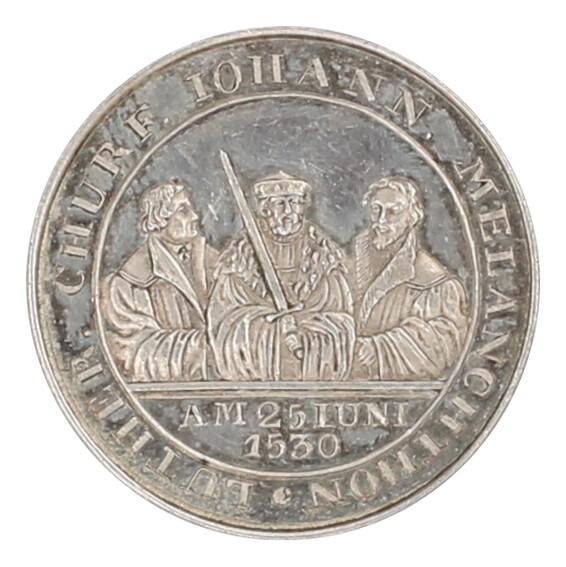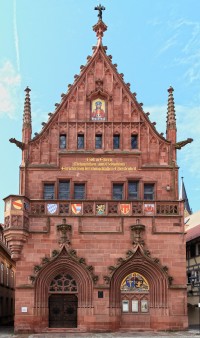Vorderseite: Hüftbild von Johann d. Beständigen von vorne mit Kurhut und Kurmantel, mit beiden Händen Kurschwert haltend, neben ihm die Hüftbilder Luthers (l.) und Melanchthons (r.), ihm etwas zugewandt, beide im Talar.
Umschrift: LUTHER. CHURF. IOHANN. MELANCHTHON; im Abschnitt: AM 25. IUNI / 1530
Rückseite: Ansicht der Veste Coburg, im Abschnitt: 1830.
Umschrift: EINE FESTE BURG IST UNSER GOTT; unten: Stern zwischen zwei Blüten.
Johann der Beständige (1468 – 1532), Kurfürst von Sachsen, Martin Luther (1483 – 1546) und Philipp Melanchthon (1497 – 1560)
en

